Weekly Stock Review | A-Shares Hit New Highs; Auto Stocks Surge Post Mid-Year Reports
![]() 08/25 2025
08/25 2025
![]() 433
433
Reviewing the weekly performance of auto stocks and observing the dynamics of the auto market.
Summer is not just about scorching heat; it's also about a fiery stock market. A-Shares' recent surge has been as explosive as the nationwide heatwave, breaking records. On Friday of this week, the Shanghai Composite Index surpassed the 3,800-point mark, setting a new historic high.
By Friday's close, trading volumes had surged significantly in both markets. The Shanghai Composite Index rose by 1.45% to 3,825.76 points, the Shenzhen Component Index increased by 2.07% to 12,166.06 points, and the ChiNext Index soared by 3.36% to 2,682.55 points. The total trading volume for the day reached 2.535 trillion yuan, a substantial increase of 5% from the previous day, maintaining levels above 2 trillion yuan for multiple consecutive days. More than 2,806 stocks gained, with 82 stocks hitting their daily limit, presenting a prosperous and positive trend.
Amidst the heated market trading, the flow of mainstay funds accelerated, with a net outflow exceeding 25.8 billion yuan. Notably, computing power chips and semiconductor-related sectors became the primary targets for buying by mainstay funds. With the continuous surge in artificial intelligence, related industries are also gaining momentum.
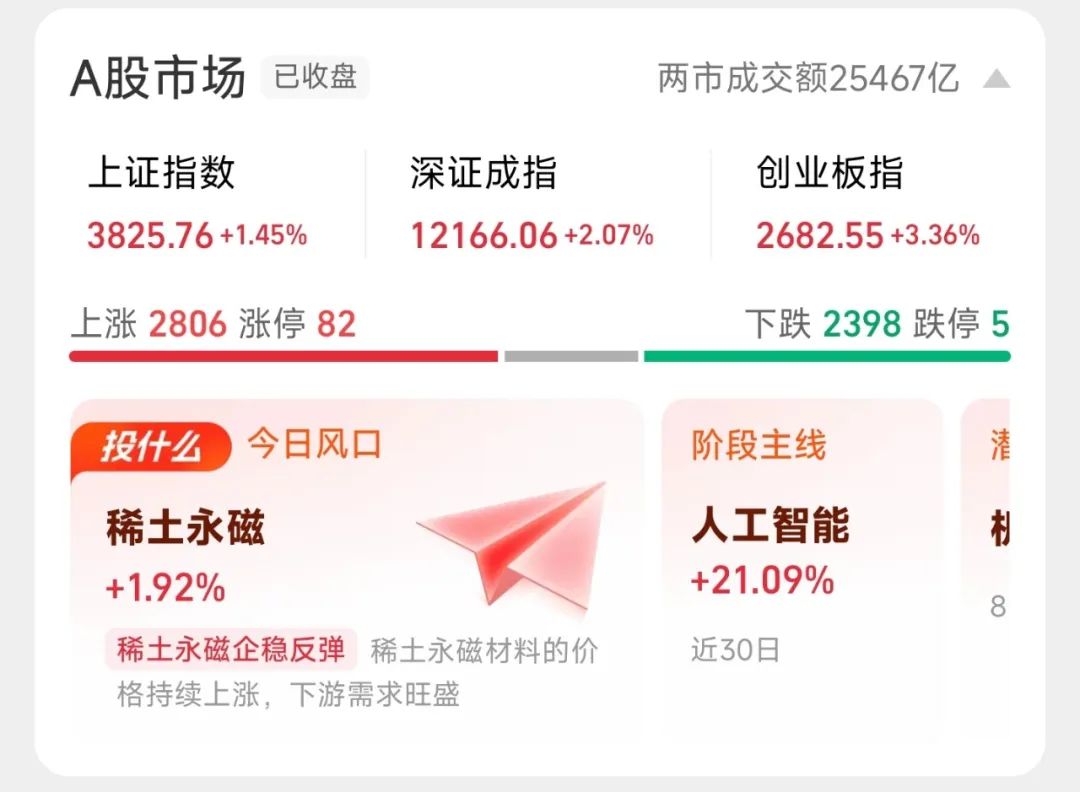
The chip fever is capturing the attention of capital. Beyond smartphone manufacturers, auto manufacturers and advanced driving assistance system (ADAS) solution providers are also starting to lay out the chip industry. The domestic chip manufacturing sector, in particular, has garnered significant market attention.
As a leading domestic chip manufacturer, SMIC surged by 14.19% on Friday alone, with its market capitalization breaking through 830 billion yuan. It also became the stock with the highest net inflow of mainstay funds.
Furthermore, against the backdrop of growing demand for domestic artificial intelligence and large-scale computing power, the demand for AI chips is exploding, propelling companies like Cambrian Innovation to take off. Notably, according to news from the official DeepSeek WeChat account, the new version is designed for the next generation of domestic chips, marking another positive development for the chip manufacturing industry.
Beyond the heated chip industry, the auto industry has also ushered in a bull market. With many automakers releasing their mid-year financial reports, several have set new records in the first half of the year.
According to data from the China Passenger Car Association, in July, passenger vehicle production reached 2.2557 million units, up 13.4% year-on-year; wholesale and retail sales were 2.2434 million units and 1.8436 million units, respectively, up 14.1% and 7.3% year-on-year; and exports totaled 484,200 units, up 27.3% year-on-year.
Among them, Xiaomi, the rising star in the automotive industry, continued to stand out with its financial report. On August 19, Xiaomi Group released its second-quarter financial report, reporting total revenue of 116 billion yuan, up 31% year-on-year, and profit of 10.8 billion yuan, up 75% year-on-year.
The primary reason for Xiaomi's positive financial report is the continuous improvement of its automotive business, which used to incur significant losses. The losses related to vehicle manufacturing and innovative businesses amounted to only 300 million yuan. Xiaomi Auto delivered over 30,000 vehicles in July and 81,302 vehicles in the second quarter, with its performance continuing to climb.
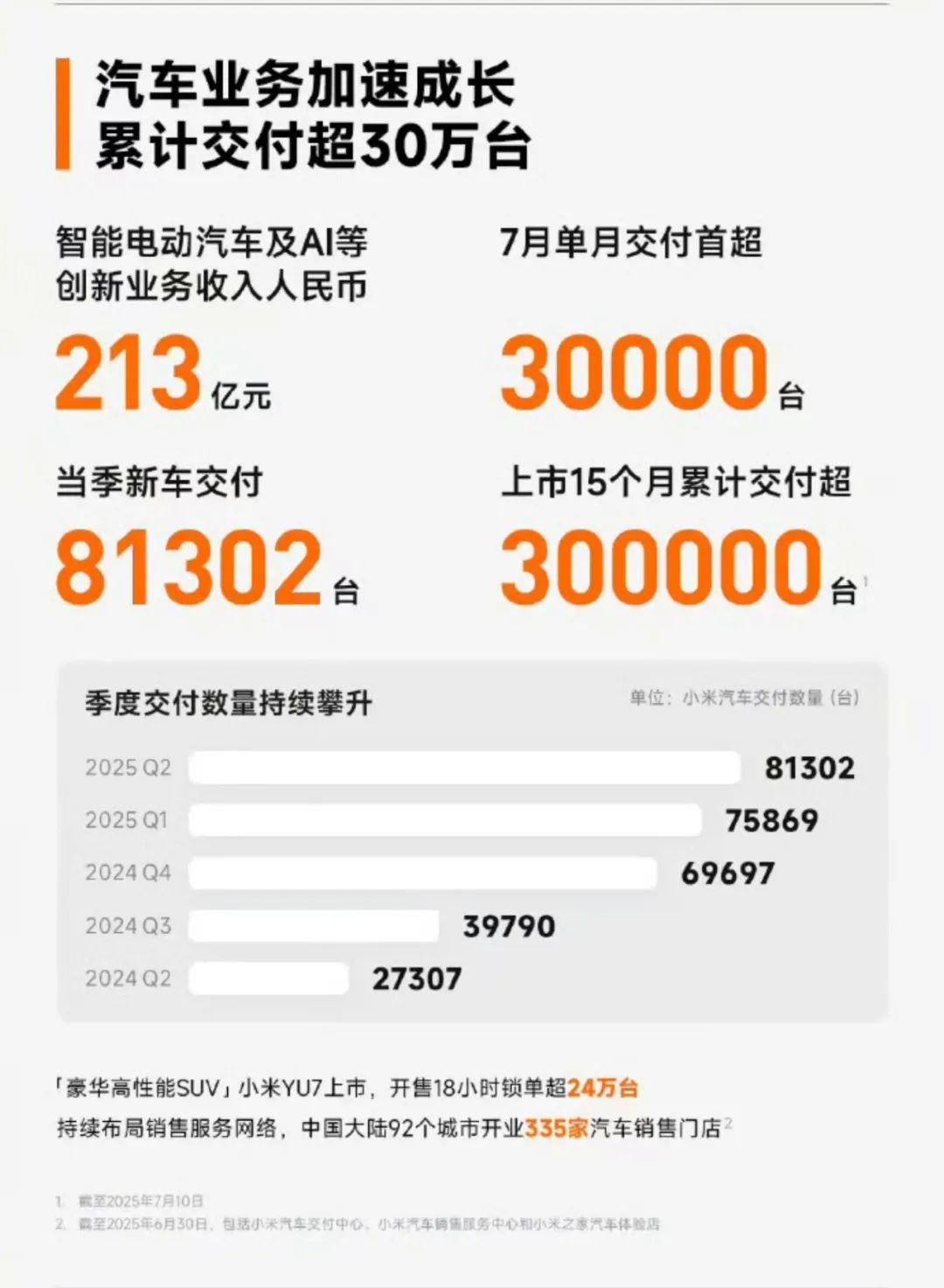
More importantly, Xiaomi's automotive gross profit margin reported in its financial report rose to 26.4%, with an average selling price (ASP) of 250,000 yuan, surpassing many automakers and ranking second only to Thalys' 27.6% in the first quarter. Xiaomi Auto has become the fastest automaker among the new forces to achieve break-even, rewriting the profit cycle for vehicle manufacturing.
Among the data released during the same period, Tesla's gross profit margin was 17.2%, Li Auto's was 20.5%, and BYD's was 20.1%. Xiaomi has traversed the 10-year profit cycle of traditional automakers in just one year, setting a new record.
Benefiting from high gross margins and narrowing losses, Lu Weibing, President of Xiaomi Group, made it clear that Xiaomi Auto will achieve quarterly profitability in the second half of 2025.
Affected by this, Xiaomi Group's Hong Kong stock price has remained at a high point of HK$50. As of Friday's close, Xiaomi's stock price was HK$52.45, up 2.14%, with a market capitalization of 1.25 trillion yuan.
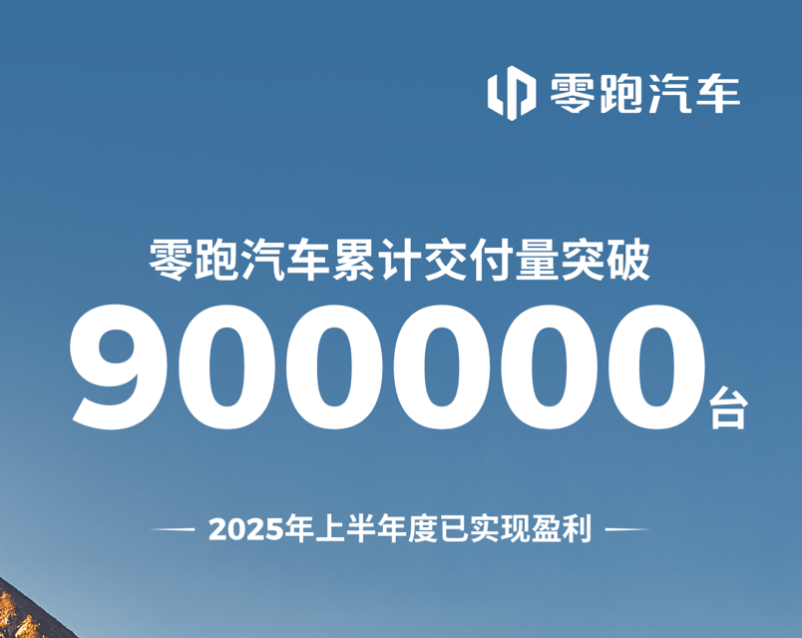
When it comes to profitability, currently, only BYD and Li Auto among domestic new energy brands have achieved profitability. In their latest mid-year financial reports, Leapmotor, the sales champion among the new forces, finally achieved semi-annual profitability.
On August 18, Leapmotor released its financial report for the first half of 2025, reporting revenue of over 24.5 billion yuan, up over 170% year-on-year, and achieving profitability for the first time in a semi-annual report. This achievement is attributed to Leapmotor's deep cultivation of the supply chain, with the product gross profit margin reaching a historic high of 14.1%.
Although Leapmotor's gross profit margin is not impressive compared to companies like Xiaomi and BYD, as a rising star among the new forces in vehicle manufacturing, Leapmotor has proven another profitable path for automotive manufacturing through steady progress.
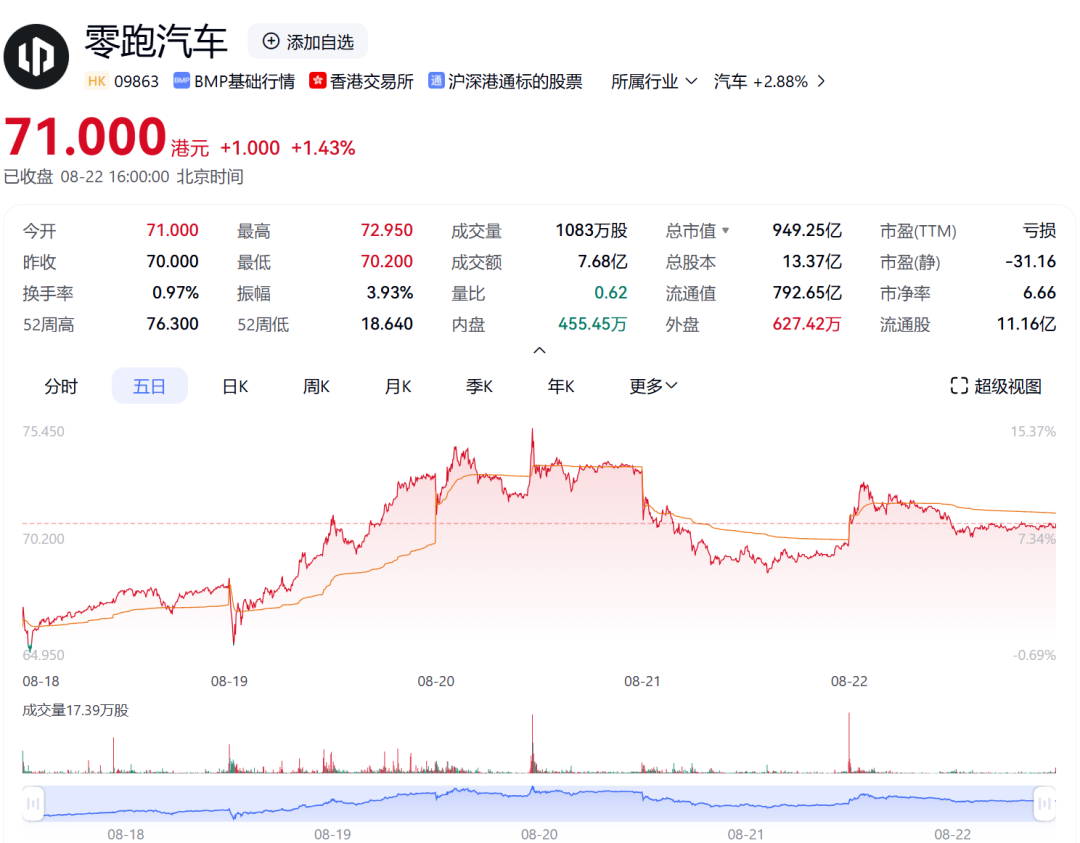
With positive sales and financial performance, Leapmotor also revised upward its delivery target for 2025 during its financial report meeting, increasing it to 580,000-650,000 units, and aiming to hit the milestone of annual sales of 1 million units in 2026.
Affected by the mid-year financial report, Leapmotor's stock price has been on the rise, with a weekly increase of over 8%. It closed at HK$71.00 on Friday, up 1.43%, and stabilized above HK$70 for the week.
Meanwhile, as Leapmotor's operations improve, various news about collaborations with Leapmotor continues to emerge. This week, there were reports that FAW Group plans to acquire a 10% stake in Leapmotor. Although FAW quickly denied the rumor, Leapmotor did not respond, leaving much room for imagination.
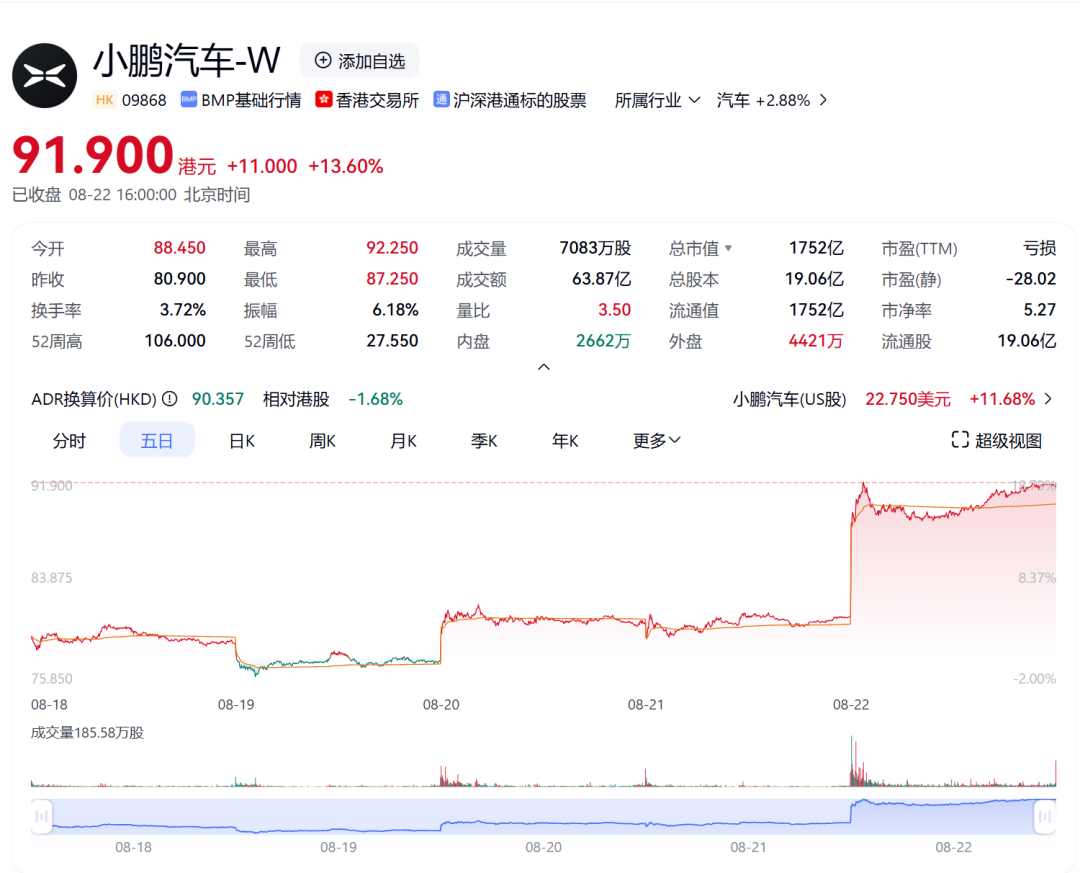
Another company releasing its financial report was XPeng Motors. As a representative of the annual comeback, XPeng has re-entered the forefront of sales among the new forces in less than a year, maintaining a monthly sales volume of over 30,000 units this year, proving that as long as one remains in the game, there is always a chance for a turnaround.
On August 19, XPeng Motors released its second-quarter financial report, reporting revenue of 18.27 billion yuan, up 125.3% year-on-year, with net losses narrowing to 480 million yuan. In the second quarter, it delivered over 100,000 vehicles, up 241% year-on-year.
Affected by the record-breaking financial report, XPeng's stock price also exhibited leapfrog growth. On Friday of this week, XPeng Motors' Hong Kong stock surged by 13.6%, with its share price reaching a high of HK$91.9.
During the financial report meeting, He Xiaopeng revealed that XPeng Motors' models supporting L4 autonomy will enter mass production in 2026 and will begin pilot Robotaxi operations and services in some regions. The XPeng humanoid robot is expected to enter mass production in the second half of 2026, and the new generation of humanoid robots will be unveiled at the 1024 XPeng Tech Day.
To stabilize the stock price, He Xiaopeng increased his holdings by 3.1 million shares this week, with an average price of HK$80.49 per Class A ordinary share. After this increase, He Xiaopeng and his related parties collectively own approximately 18.9% of the company's shares.
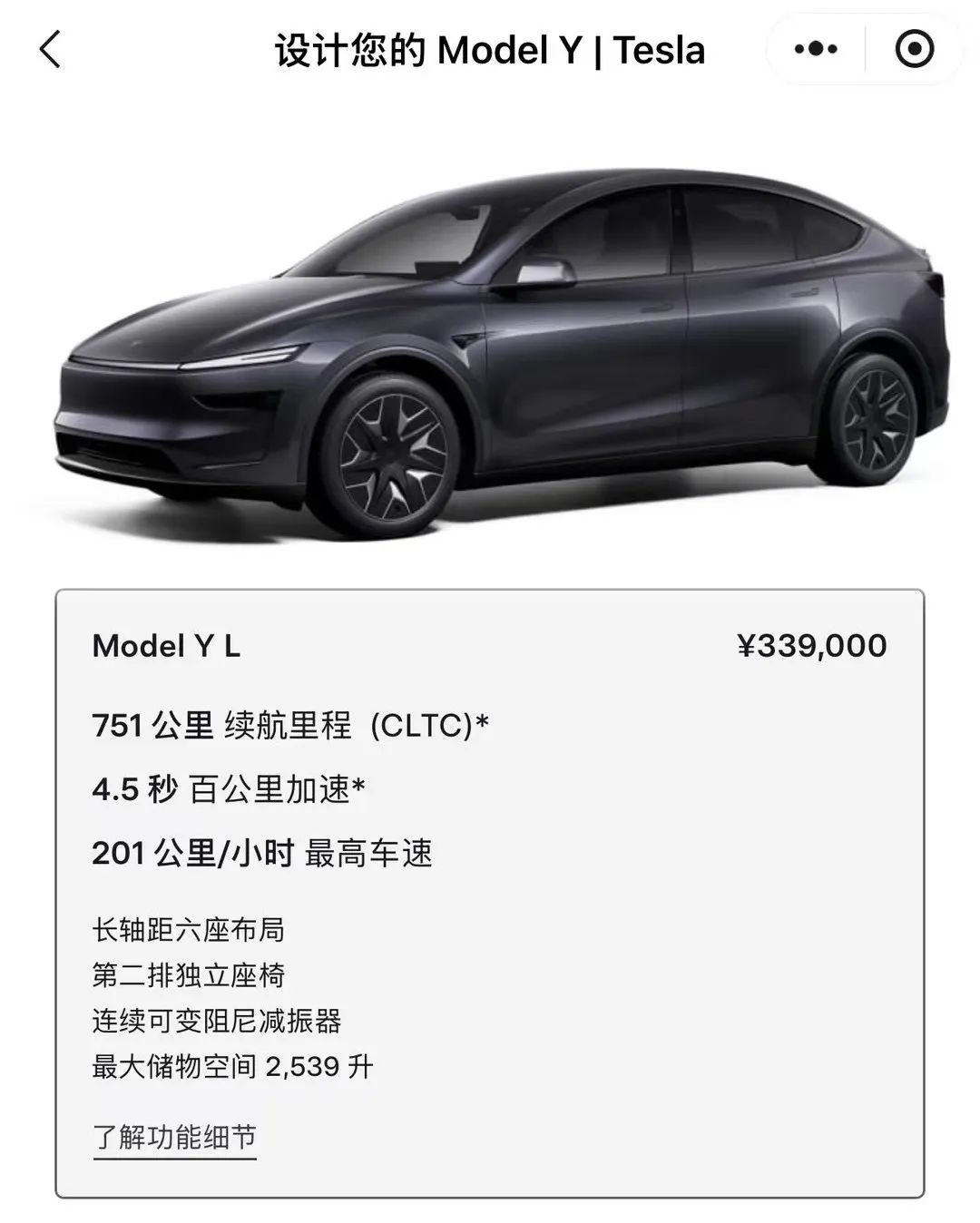
While domestic brands are thriving, Tesla, once a pioneer in the new energy sector, is facing challenges. This week, Tesla launched the six-seat version of the Model Y L in the Chinese market, with a starting price of 339,000 yuan, aiming to secure a share of the domestic pure electric six-seat SUV market.
From the market's response, public opinion on this new model is mixed, and its performance will ultimately depend on market feedback. However, on the other hand, this new model has stirred up controversy among American users, with many leaving comments on Musk's social media account inquiring about when the Model Y L will be produced locally in the United States.
From the perspective of capital market performance, this quiet launch failed to rescue Tesla's declining share price. As of 16:00 local time on August 21, Tesla's share price was reported at $320.110, down 1.17%, with cumulative weekly declines exceeding 3%.
Amidst intensifying competition in the new energy vehicle sector, summer is becoming a new sales growth point for automakers. Especially in the second half of the year, which began in July, a strong start is needed to sprint towards the end-of-year sales targets.
On the other hand, new forces in vehicle manufacturing are striving to achieve profitability, aiming to break through the biggest bottleneck in the industry. After more than a decade of development, there are still only a handful of profitable new energy vehicle brands in China. However, this year, Leapmotor, XPeng, and Xiaomi all have the potential to break through this critical juncture.
This also proves that through more than a decade of experience accumulation, domestic vehicle manufacturing is gradually maturing. In particular, Xiaomi Auto's record-breaking speed demonstrates that profitability in vehicle manufacturing does not necessarily require an exceptionally long period of time accumulation, as long as the direction is right.
The booming market proves the promising future of the new energy vehicle market, and the capital market is also voting with real money to believe in the market's potential.

Note: Some images are sourced from the internet. If there is any infringement, please contact us for removal.
-END-





